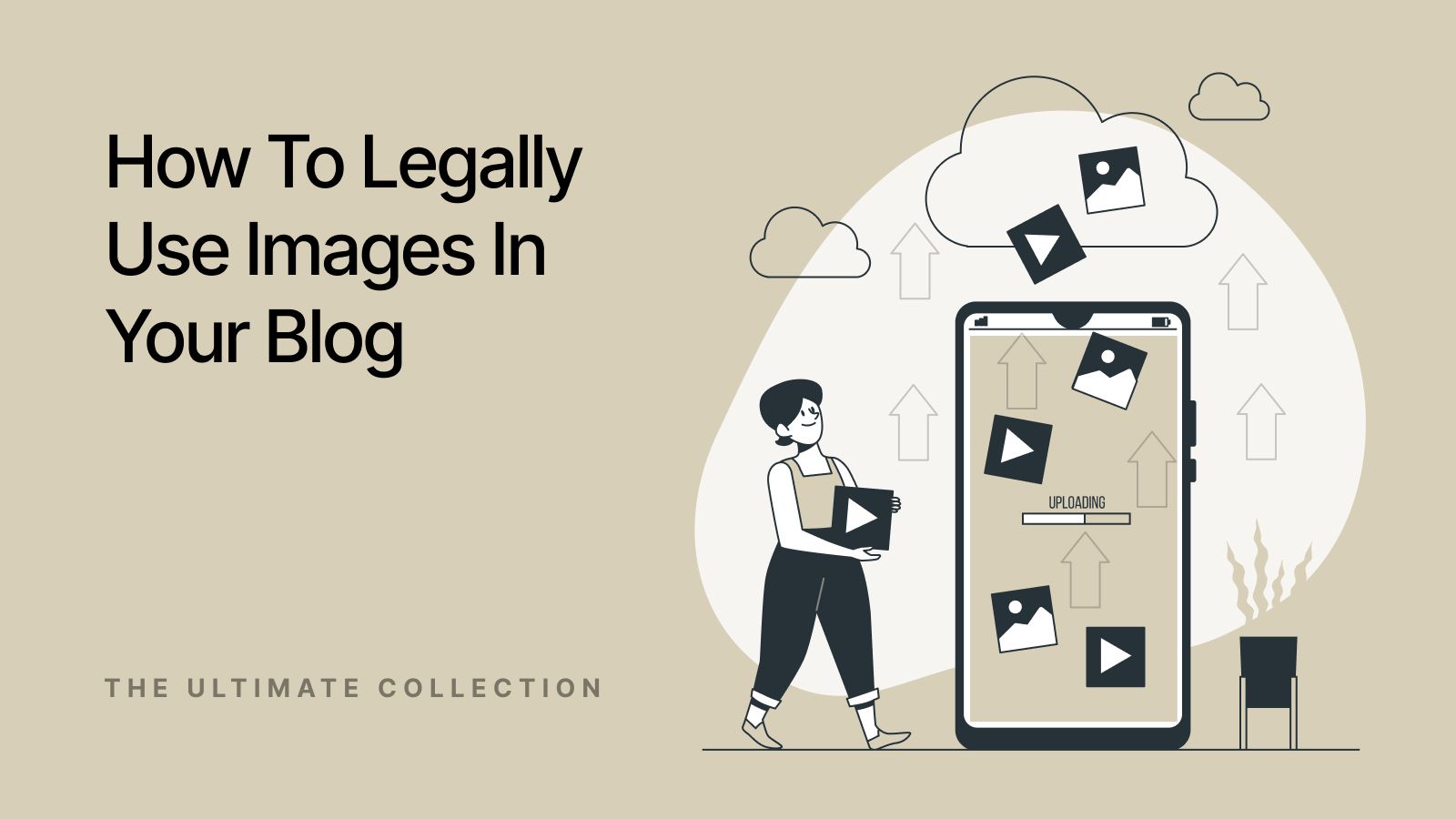As the famous adage goes, a picture is worth a thousand words. Incorporating images into your blog can significantly boost engagement, explain complex concepts, and instill vibrancy into your content. However, the internet is not a free-for-all regarding image usage. To avoid legal pitfalls, it's essential to understand how to use images in your blog posts legally.
What Should You Know about Copyright Law
Copyright law is a crucial aspect to consider when using images in your work. Here are vital points you must know about it:
- Protection for Original Works: Copyright laws protect original works of authorship. This broad category includes photographs, illustrations, literature, music, and films.
- Automatic Rights: When someone snaps a photo or creates an image, they automatically own the rights to it. This is true even if the work doesn't carry a copyright symbol.
- Attribution Isn't Enough: Unfortunately, respecting copyright law isn't as simple as providing attribution to the original creator. You must obtain their explicit consent to use their work.
- Need for Legal Documents: To use someone else's images, you'll often need to gain explicit consent, usually through written permission. Hence, this necessitates the need for legal document templates.
In summary, respecting and understanding copyright laws helps you use images responsibly and avoid potential legal troubles. Consider these points when you intend to use images in your blogs or any other type of content.
Public Domain Images are Your Friends
Public domain images are a valuable resource and offer a legal and free way to enhance your content visually. These images have either 'aged out' of copyright restrictions or have been intentionally released into the public domain by their creators, making them safe to use without worrying about copyright infringement.
Here are some examples of websites that provide a treasure trove of public domain images:
- Unsplash: This platform offers a vast range of high-resolution images, free to use under the Unsplash license.
- Pexels: Pexels provides a collection of free-to-use images. The variety and quality of photography make it an excellent resource.
- Wikimedia Commons: As a project of the Wikimedia Foundation, it offers over 60 million freely usable media files.
- Pixabay: Another great site providing free images and videos under Pixabay's license, making them safe to use without asking for permission or giving credit to the artist.
- Public Domain Pictures: A repository for free public domain images.
With these resources at your fingertips, you can find the perfect image to enhance your next blog post, website design, or social media update.
Creative Commons Can Be a Lifesaver
The Creative Commons (CC) licenses are a blessing for bloggers. Photographers and designers who release their work under CC licenses are allowing people to use their images as long as the users follow the stipulations laid in the license. Some may require attribution, while others might C forbid commercial use. Ensure you carefully read the CC license associated with an image before using it.
Paid Stock Images — An Investment Worth Making
While numerous resources offer free images, paid stock images still hold undeniable value. Certain situations demand a picture of a specific niche, quality, or style that only a paid stock image can satisfy. Various websites offer these high-quality, royalty-free images for a fee. Let's delve into the critical details of a few popular ones:
- Shutterstock boasts a library of over 350 million high-quality licensed images. All images are royalty-free but require payment, with options for single image purchase or subscription plans. The service offers a user-friendly interface with robust search features, making it easier to find the perfect image.
- Getty Images is renowned for its top-tier premium content. The service provides flexible purchasing options, including single image purchases, packs, and subscriptions, and offers both Rights-Managed (RM) and Royalty-Free (RF) images catering to different needs.
- Stock is powered by Getty Images but offers more budget-friendly options. The service provides millions of exclusive, royalty-free photos and organizes images into two main collections: Essentials for everyday content and Signature for premium images.
Investing in these platforms for high-quality, unique imagery can elevate your blog post, website, or promotional material. It may often be the distinguishing factor between an ordinary piece of content and a masterpiece.
No One Can Copyright Your Creativity!
It sounds obvious, but it's often overlooked. Snapping your photos ensures that you hold the copyright, and it also adds a personal touch to your blog posts. However, when taking pictures of people, remember to get their permission first, especially if you intend to use the images commercially.
Conclusion
With the array of beautiful images just a click away, it's tempting to add them all to our blogs. But, when it comes to using online photos, it's always better to play safe than sorry. Following these tips, you can stave off that impending legal pitfall and focus on what you do best — creating captivating content.
